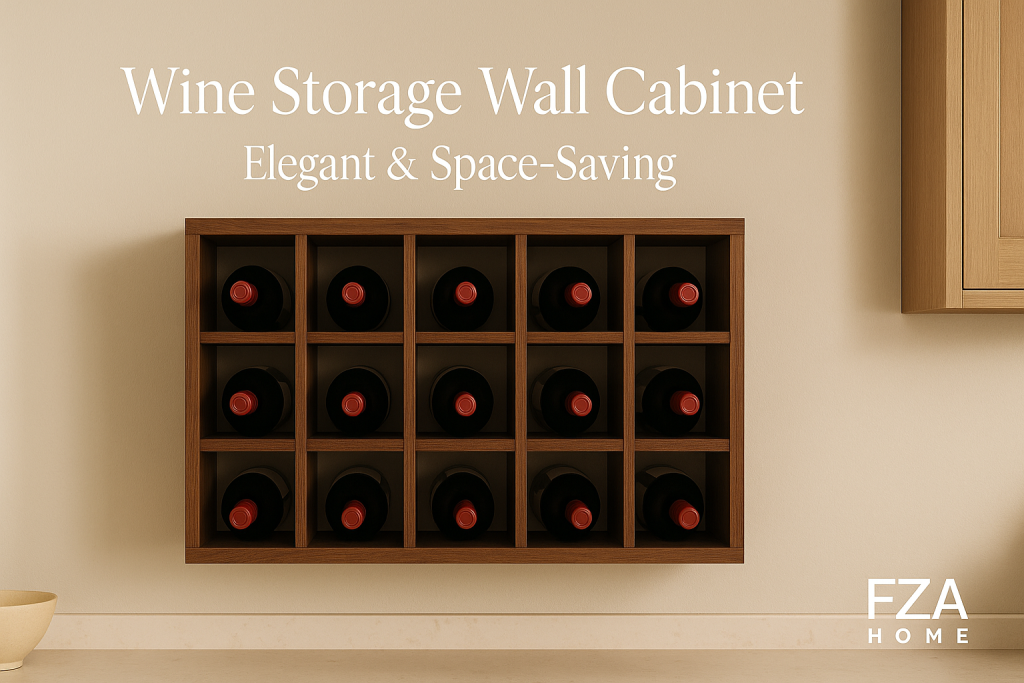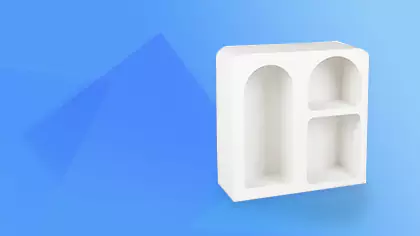
Imagine stepping off a busy day, pouring yourself a glass of red, and reaching for it on a sleek wall cabinet that looks like it belongs in a high-end restaurant. That’s the magic of a wine storage wall cabinet—it elevates your wine from a humble bottle to a piece of art, seamlessly blending storage and display. Whether you’re a casual sipper who wants to stash a few favorite vintages or a budding collector with dozens of bottles, a wall-mounted solution frees up floor space, showcases your collection, and becomes a focal point in your home décor.
In this guide, we’ll take you on a deep dive: from understanding exactly what these cabinets are and why they’re taking over modern interiors, to exploring the myriad styles—floating shelves, built-ins, modular systems—and the must-have features like adjustable shelving, lighting, and security locks. We’ll also cover installation tips, budget breakdowns, and eco-friendly material choices, so by the end you can make an informed decision that balances form, function, and flair. Ready to turn your wine into stylish wall art? Let’s get started.
What Is a Wine Storage Wall Cabinet?
At its core, a wine storage wall cabinet is exactly what it sounds like: a cabinet or shelving system designed specifically to hold and display wine bottles, mounted securely on a wall rather than sitting on the floor. Unlike a standard wine rack that often lives in a basement corner, wall cabinets bring your collection eye-level—perfect for showcasing labels and creating visual impact. These cabinets range from simple, open-shelf designs to fully enclosed units with temperature control and glass doors. Whatever your space or style, there’s a configuration that turns bottles into décor.
Advantages Over Traditional Wine Racks
Why choose a wall cabinet over a freestanding rack or a wine fridge? Here are a few compelling reasons:
- Space Efficiency
Wall cabinets free up floor real estate—ideal for small apartments or kitchens with limited square footage. You can slot them above counter height or even integrate them under a window, maximizing vertical space. - Aesthetic Integration
Instead of a bulky metal rack in the corner, wall-mounted units can match cabinetry, accentuate a feature wall, or hide behind glass doors for a refined look. They transform wine from “storage” to “showcase.” - Customized Display
Many wall cabinets come with adjustable shelves, modular inserts, or backlighting, letting you spotlight special vintages or arrange by region, color, or vintage year—like curating your own wine gallery. - Enhanced Protection
Enclosed wall cabinets can offer UV-resistant glass, airtight seals, and even climate control features, which shield your wine from light, dust, and temperature swings—conditions that can prematurely age or spoil wine.
With these advantages, it’s no wonder homeowners are tapping into their walls instead of just their cellars.
Types of Wine Storage Wall Cabinets
When you start browsing, you’ll notice there’s no one-size-fits-all. Wine wall cabinets come in distinct flavors—here’s a quick tour:
Floating Shelves and Racks
Picture a series of slim ledges that cradle each bottle horizontally, with the label facing forward. Floating wine shelves are minimalist and modern, often made from metal or wood slats. They feel light and airy—almost like wine is magically hovering on your wall. Installation is straightforward, and you can stagger them in an artful pattern or keep them perfectly aligned for sleek symmetry.
Built-In Cabinets
Built-in wine cabinets are integrated into surrounding millwork or cabinetry. They mimic kitchen cupboards or pantries, complete with doors (solid or glass-front) that conceal your collection when you want a clean look. These units blend seamlessly into your architecture, whether that’s custom kitchen islands, dining room alcoves, or hallway nooks.
Modular and Customizable Systems
If you crave ultimate flexibility, modular systems let you add, remove, or rearrange components over time. Typically, you start with a base module—say, a 12-bottle unit—and stack or connect additional modules to grow your collection.
Stackable Modules
These are individual cubes or frames that fit snugly together. You can configure them vertically, horizontally, or in geometric patterns. Perfect for renters or anyone who expects their collection to evolve.
Integrated Wine Cellars
High-end custom solutions can include insulation, cooling units, and humidity control, effectively turning a wall into a mini-wine cellar. These systems often require professional installation but deliver restaurant-quality storage conditions right at Ahome.
Design Considerations
Before you impulsively drill holes in your wall, think through these critical design factors:
Capacity and Space Requirements
How many bottles do you currently have? How many might you collect over the next five years? Measure both your collection size and the wall area you’re willing to dedicate. A small floating shelf holding six bottles may be perfect for casual drinkers, while ardent collectors might need a 48-bottle built-in. Always leave breathing room—overcrowding not only looks messy but makes bottle retrieval awkward.
Material Selection and Durability
Your choice of material affects both aesthetics and longevity.
- Wood brings warmth and richness—oak, walnut, or reclaimed barnwood add character, but be sure it’s sealed to resist wine drips.
- Metal offers an industrial edge; steel or wrought iron frames are ultra-durable and support heavier loads but may feel cold without wood or glass accents.
- Acrylic can give the illusion of floating wine bottles, providing a modern, minimalist vibe, though it may scratch more easily than metal or wood.
Wood vs Metal vs Acrylic
| Material | Strength | Aesthetic Impact | Maintenance |
|---|---|---|---|
| Wood | Moderate–High | Warm, traditional | Needs sealant, wipe spills promptly |
| Metal | High | Industrial, sleek | Easy wipe-down, rust-resistant finishes available |
| Acrylic | Moderate | Ultra-modern, transparent | Prone to scratches, clean with non-abrasive cloth |
Temperature and Humidity Control
Wine is sensitive to both heat and dryness. If your kitchen or living area experiences wide temperature swings, consider:
- Passive Insulation: Thick-walled cabinets with rubber gaskets can dampen brief fluctuations.
- Active Cooling: Some high-end wall units come with built-in thermoelectric or compressor cooling, maintaining a steady 55°F–58°F.
Insulation and Sealing
Proper seals keep humidity around 60–70%—ideal for cork integrity. UV-protective glass doors prevent sunlight from degrading your vintages, and insulation behind the walls ensures consistent internal conditions.
Key Features to Look For
Once you’ve nailed down style and materials, it’s time to zero in on the details that separate a good wine cabinet from a great one.
Adjustable Shelving and Modular Inserts
Life happens—your bottle shapes, sizes, and quantities change. Avoid fixed-spacing racks; opt for adjustable shelves or grid inserts that slide out and relocate. Some systems even include half-bottle slots or stemware holders, so you can tinker with your layout on the fly.
Security Features and Locking Mechanisms
If you’ve invested in rare vintages, you might want a lockable door. Choose discreet cam-locks or magnetic catches that secure behind a handleless facade. For homes with children, this also doubles as a safety feature.
Lighting Options (LED, Backlighting)
Showcase your labels with integrated LED strips or puck lights. Warm white LEDs highlight deep reds and golden whites beautifully. Backlighting adds drama—imagine a gentle glow behind each shelf, making your bottles look like jewels in a display case.
Aesthetic Finishes and Hardware
Hardware choices—handles, knobs, hinges—may seem minor, but they tie the whole look together. Brushed brass, matte black, or polished chrome can complement your existing kitchen or bar décor. And don’t forget edge banding or trim—clean, mitered corners give that custom-built appearance.
Style and Aesthetic Options
Your wine storage wall cabinet can be more than just a place to stash bottles—it can become a style statement that elevates the entire room. Maybe you crave the sleek lines of modern minimalism, with a frameless glass door and hidden LED strips that make your cabernets look like museum artifacts. Or perhaps you prefer the warmth of reclaimed wood, complete with iron hardware and a distressed finish that whispers “old‐world charm.” Rustic farmhouse, industrial loft, mid-century modern or coastal chic—all can be brought to life with the right materials, finishes and accents.
- Choosing a finish sets the tone. Natural oak or walnut stains invite a cozy, organic feel, while matte black or gunmetal frames lean into industrial edge.
- Glass door types range from clear and UV-protected to frosted or smoked, depending on how boldly you want to display your labels.
- Hardware details—think brushed brass handles or leather pulls—can tie into other metal fixtures in the room for a cohesive look.
- Integrated lighting options, such as puck lights, LED strips or backlit panels, turn each shelf into a glowing showcase. Warm white LEDs bring out the ruby depths of reds and the golden hues of whites.
Don’t forget the space around your cabinet. A contrasting wallpaper behind glass-fronted shelving, a decorative tile backsplash, or even a framed art print can act as a backdrop, turning your wine display into a living piece of décor. With thoughtful choices, your wine wall cabinet becomes not just storage, but a design focal point that sparks conversation every time you pour a glass.
DIY vs Ready-Made vs Custom-Built Solutions
Deciding how to get that dream wine cabinet on your wall often comes down to three routes: tackle it yourself, pick up a ready-made unit, or invest in a custom build. Each path has its own trade-offs in cost, time, and personalization.
- DIY projects let you tailor dimensions, finishes and layouts precisely to your space—and there’s nothing more rewarding than standing back to admire a creation born of your own two hands. You’ll need basic carpentry tools, a clear plan (down to stud placement and load calculations), and patience for sanding, sealing and fitting racking components. Mistakes can mean wasted materials or weaker storage, so be honest about your skill level before committing.
- Ready-made cabinets from big-box stores or online retailers offer instant gratification: they ship, you mount, you fill. Styles vary from ultra-modern metal frames to classic wood designs. Prices tend to be moderate, but quality and durability can fluctuate. You sacrifice some uniqueness for speed and convenience, but you also benefit from manufacturer warranties and standardized instructions.
- Custom-built solutions, crafted by local cabinetmakers or specialty wine furniture shops, deliver the ultimate in fit and finish. They integrate seamlessly with your walls or existing cabinetry, can include advanced features like climate control and security locks, and allow you to choose every knob, hinge and wood grain. The downside is the premium price tag and lead time—custom jobs often take weeks or months from design to installation.
Whichever route you choose, weigh your budget, timeline and desire for personalization. A little upfront planning keeps you from regretting a choice that looks great at first but fails to meet your collection’s future needs.
Installation and Safety Tips
Mounting a wine cabinet on your wall isn’t as simple as hammering in a nail. Bottle weight, stud placement and safe working practices all demand respect—after all, the last thing you want is your prized vintages crashing to the floor.
First, locate sturdy support. Use a stud finder to map each stud behind drywall or plaster. Heavy cabinets (or those filled with bottles) should be anchored directly into studs with long, load-rated screws. If studs don’t line up with your cabinet rails, employ high-quality wall anchors or toggle bolts rated for the combined weight of the unit plus bottles (often over a hundred pounds).
Make sure your cabinet is perfectly level before tightening hardware. A slight tilt makes bottle retrieval awkward and increases the risk of slipping. Have a helper hold the piece in place while you mark and drill pilot holes. Wear safety goggles and gloves to protect against flying debris and rough edges.
If your cabinet includes built-in lighting or cooling elements, follow local electrical codes. Hard-wiring should be done by a licensed electrician; plug-in LED strips are easier but leave dangling cords that may need concealing. For cooling modules, ensure there’s adequate ventilation behind the unit to prevent overheating of compressors or thermoelectric coolers.
Finally, think about child and pet safety. Locking doors, recessed handles or magnetic catches keep curious hands away from breakables. Anchoring tall cabinets at the top with anti-tip straps adds extra peace of mind, especially in homes with energetic little ones.
Maintenance and Cleaning
A well-cared-for wine cabinet not only looks pristine but also protects your collection. Regular dusting with a microfiber cloth keeps wood and metal finishes looking sharp. For glass doors, a streak-free glass cleaner applied with a soft, lint-free cloth removes fingerprints without scratching.
If your cabinet is wood-framed, check seals and joinery twice a year. Slight temperature or humidity shifts can cause wood to expand or contract, loosening joints. A dab of wood-safe glue or a quick retightening of screws restores rigidity. Metal racks or frames may benefit from a wipe with a damp cloth followed by a dry buff to ward off corrosion—especially in coastal or humid environments.
For models with climate control, change air filters, clean condenser coils (on compressor units) and inspect drip pans. Thermoelectric systems require clear airflow through vents; keep them free of dust and blocked passages. Humidity packs or integrated humidifiers should be refilled or replaced as per manufacturer guidelines to keep corks from drying out.
Spills happen. If you accidentally drip wine on wood or metal, blot immediately with a damp cloth. Avoid harsh chemical cleaners that strip finishes. A gentle solution of mild dish soap and water usually does the trick. Finish with a dry towel to prevent water spots or streaks.
Integrating Your Wine Cabinet into Home Decor
Your wine wall cabinet can harmonize with existing décor or stand out as an intentional centerpiece. In an open-plan living area, situate it near the dining table or bar cart so guests instinctively wander over. In a kitchen, tuck it between upper cabinets or above a countertop buffet—this dual-purpose arrangement keeps drinks and glassware conveniently within arm’s reach.
Consider building a “wine nook” by flanking the cabinet with floating shelves for glassware, a small countertop for decanting, and a statement art piece overhead. Add bar stools or a slim console table in front to create a casual tasting area. Accent lighting—like a floor lamp or a track light—can spotlight the display and set a relaxed mood.
If your style is more understated, choose trim and cabinet finishes that match your existing cabinetry. Concealed hinges and flush-mount glass doors let your wine collection blend in, almost like an elegant pantry door. For a bold look, paint the back wall of an open-shelf unit in a contrasting color or apply textured wallpaper to make your bottles pop.
Ultimately, your wine storage wall cabinet should feel like a natural extension of your home’s personality—whether that’s a sleek urban loft, a cozy farmhouse kitchen or an art-filled dining room bathed in warm light.
Budgeting and Cost Factors
Investing in a wine storage wall cabinet can feel like a balancing act between design dreams and dollar signs. Understanding the cost breakdown ahead of time will help you avoid sticker shock and ensure you allocate funds wisely. Generally speaking, entry-level floating racks and open shelving units start around $150–$300. These options are ideal for casual collectors who want a minimal footprint and aren’t concerned with temperature control or enclosed doors. If your priorities include a mix of display and protection, mid-range built-in cabinets with glass fronts and simple insulation typically run $500–$1,500, depending on materials and finish quality.
For true enthusiasts seeking climate-controlled storage—complete with thermoelectric or compressor-based cooling modules—prices escalate into the $2,000–$5,000 range, especially when you factor in professional installation and electrical work. Custom wood-framed units with premium handles, integrated LED lighting, and advanced humidity controls can exceed $10,000 in high-end markets. Don’t forget to budget for peripheral costs: hiring a carpenter or electrician ($50–$100 per hour), purchasing specialized mounting hardware or anchors ($20–$100), and possibly reinforcing walls or cabinetry to support the added weight of filled bottles.
To make the most of your budget, consider these strategies:
- Prioritize Core Features: Decide if climate control is a must. If you mainly drink wines within a year of purchase, an insulated but non-cooled cabinet may suffice, saving you 30–50% off full-cooling systems.
- Phased Approach: Begin with a basic open or glass-front cabinet, then add lighting or temperature modules later as your collection grows.
- Shop Seasonal Sales: Many retailers discount display-grade furniture around major holidays or end-of-season clearances. You can often knock off 20–40% on select models.
- Consider DIY for Trims and Finish Work: Installing a pre-built cabinet yourself and doing your own painting or staining can save hundreds in labor fees.
Top Brands and Product Recommendations
When it comes to wine storage wall cabinets, a handful of brands consistently earn rave reviews for design, build quality, and overall value. Below are some standout options across different price tiers:
Wine Enthusiast
Known for accessible pricing and solid performance, Wine Enthusiast offers floating racks and enclosed cabinets in the $200–$800 range. Their Classic View modular system features clear acrylic panels that let bottles appear to “float,” and they offer optional LED light kits for under-cabinet illumination. Most kits are sold in 12-bottle modules that can be stitched together to accommodate larger collections.
Vinotemp
Vinotemp bridges the gap between mid-range and high-end with wood-framed, glass-fronted cabinets starting around $800 and climbing to $4,000 for dual-zone cooling units. Their Urban Series line includes built-in and freestanding versions, available in rich hardwood finishes and brushed metal hardware. Vinotemp’s units typically include removable shelves and digital temperature controls.
EuroCave
A premium French brand, EuroCave specializes in professional-grade display and storage solutions. With price tags from $3,000 to over $10,000, these cabinets offer whisper-quiet compressors, high-precision humidity management, and seamless integration into custom cabinetry. EuroCave’s sleek, rounded corners and tempered UV-protected glass make their models a top choice for serious collectors and hospitality environments.
Le Cache
Le Cache’s Hidden Wine Cellar series is perfect for those who want discreet, climate-controlled storage behind a flush door. Modular units start at about $2,500 for a 20-bottle single-zone system; dual-zone systems (for reds and whites at different temperatures) begin near $4,000. Le Cache cabinets are appreciated for their low energy consumption and virtually silent operation.
IKEA
For budget-minded decorators, IKEA’s NORRÅKER shelf combined with their metal VARIERA bottle depressions can be hacked into a basic floating display for under $100. While it lacks glass doors or climate control, it offers a cost-effective way to experiment with wall-mounted wine styling in a modern Scandinavian vein.
Sustainability and Eco-Friendly Options
As the wine industry moves toward greener practices, your choice of storage furniture can support eco-responsibility as well. Look for materials and brands that minimize environmental impact without compromising style or durability.
Reclaimed and FSC-Certified Wood
Solid hardwoods like oak, walnut, and maple often come from old-growth forests with long regeneration cycles. Choosing reclaimed wood—salvaged from barns, factories, or decommissioned furniture—reduces demand on living forests and adds unique character in the form of knots, nail holes, and subtle patinas. Alternatively, seek FSC-certified options, which guarantee that the wood was harvested under responsible forestry management.
Low-VOC Finishes and Adhesives
Traditional varnishes, stains, and adhesives can off-gas volatile organic compounds (VOCs), which are harmful to indoor air quality. Many eco-conscious furniture makers now advertise water-based, low-VOC sealants and glues. When browsing, ask for the product’s VOC rating—zero or under 50 grams per liter is considered green.
Energy-Efficient Cooling
Climate-controlled cabinets consume electricity year-round. Thermoelectric cooling systems, while less powerful than compressors, use up to 30–40% less energy and are virtually silent, making them suitable for ambient living spaces. If you opt for compressor-based systems, check ENERGY STAR® certifications or manufacturer specifications to compare annual kilowatt-hour usage.
Modular, Repairable Design
Rather than discarding an entire unit for a broken hinge or outdated temperature module, modular designs allow you to replace or upgrade components individually. Brands that sell spare parts—like shelves, door seals, or light fixtures—help extend the product’s service life and reduce landfill waste.
Local Craftsmanship
Supporting local artisans and cabinetmakers not only fosters community economies but also cuts down on carbon emissions associated with long-distance shipping. Custom local builds often use regionally sourced hardwoods, and you can directly verify eco-practices and fair labor standards.
Frequently Asked Questions
Do I really need climate control for my wine cabinet?
If you store bottles for less than a year and your home stays within 50°F–70°F, an insulated but non-cooled cabinet may suffice. However, long-term cellaring or temperature-sensitive varieties (like Pinot Noir or vintage Champagnes) benefit significantly from a stable 55°F–58°F environment to preserve flavor and prevent cork degradation.
Can I mix reds and whites in the same cabinet?
Yes—if you’re fine keeping all wines at a single compromise temperature (typically 55°F–60°F). Reds flourish at slightly warmer ranges (60°F–65°F), while whites prefer cooler settings (45°F–55°F). For dedicated enjoyment and optimal aging, consider a dual-zone system that maintains separate zones tailored to each style.
How do I ensure my wall cabinet doesn’t pull away from the wall under the weight?
Use a stud finder to anchor at least four heavy-duty lag screws into solid wood studs. For cabinets that span wider than stud spacing, integrate toggle bolts or metal anchors rated for the total weight of the filled unit. Always err on the side of over-engineering when dealing with bottles and glass doors.
What maintenance does a climate-controlled unit require?
Clean condenser coils (compressor models) every six months, replace or recharge humidity packs yearly, and wipe down door gaskets to maintain airtight seals. For thermoelectric systems, simply dust vents quarterly and monitor temperature with an external thermometer to catch inconsistencies early.
Is a DIY wine cabinet installation safe for renters?
Temporary mounting solutions—such as high-quality tension rods or removable wall anchors rated for heavy loads—can work in rentals. However, verify your lease terms before drilling any holes. You might also consider freestanding cabinets designed to look wall-mounted, then secure them to a wall bracket for anti-tip safety.











